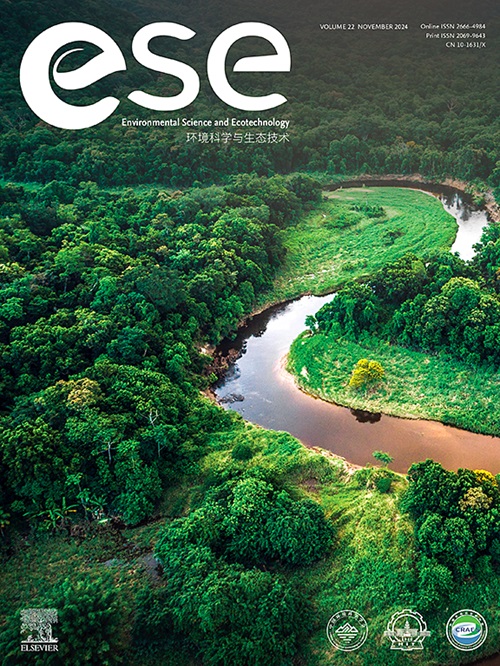通过显微图像的深度学习实时量化活性污泥浓度和粘度
IF 14.3
1区 环境科学与生态学
Q1 ENVIRONMENTAL SCIENCES
引用次数: 0
摘要
活性污泥的参数对污水处理厂的日常运行至关重要。特别是,混合液悬浮固体(MLSS)和表观粘度为活性污泥的生物量和流变特性提供了指标。确定这些参数的传统方法非常耗时,需要对每个指标进行单独测量,并且无法为未来的“智能”污水处理厂提供实时数据。在这里,我们展示了一个实时在线显微图像数据分析系统,可以定量识别MLSS和表观粘度。在化学需氧量冲击下,在实验室规模的顺序间歇式反应器中捕获活性污泥的显微视频,产生41482张高质量图像。Xception卷积神经网络架构用于建立这些显微图像与MLSS/表观粘度之间的定性和定量相关性。MLSS和表观黏度的定性鉴别准确率均大于97%,定量相关系数分别为0.95和0.96。活性污泥的显微图像与其物理参数(特别是MLSS和表观粘度)之间的定量相关性,为污水处理厂活性污泥参数的实时在线测量提供了基础。本文章由计算机程序翻译,如有差异,请以英文原文为准。

Real-time quantification of activated sludge concentration and viscosity through deep learning of microscopic images
The parameters of activatedg sludge are crucial for the daily operation of wastewater treatment plants (WWTPs). In particular, mixed liquor suspended solids (MLSS) and apparent viscosity provide metrics for the biomass and rheological properties of activated sludge. Traditional methods for determining these parameters are time-consuming, require separate measurements for each index, and fail to provide real-time data for future ‘smart’ WWTPs. Here we show a real-time online microscopic image data analysis system that quantitatively identifies MLSS and apparent viscosity. Microscopic videos of activated sludge are captured in lab-scale sequencing batch reactors under chemical oxygen demand shock, yielding 41482 high-quality images. The Xception convolutional neural network architecture is used to establish both qualitative and quantitative correlations between these microscopic images and MLSS/apparent viscosity. The accuracies of qualitative identification for MLSS and apparent viscosity are both higher than 97%, and the quantitative correlation coefficients are 0.95 and 0.96, respectively. This quantitative correlation between microscopic images of activated sludge and its physical parameters, specifically MLSS and apparent viscosity, provides a basis for real-time online measurements of activated sludge parameters in WWTPs.
求助全文
通过发布文献求助,成功后即可免费获取论文全文。
去求助
来源期刊

Environmental Science and Ecotechnology
Multiple-
CiteScore
20.40
自引率
6.30%
发文量
11
审稿时长
18 days
期刊介绍:
Environmental Science & Ecotechnology (ESE) is an international, open-access journal publishing original research in environmental science, engineering, ecotechnology, and related fields. Authors publishing in ESE can immediately, permanently, and freely share their work. They have license options and retain copyright. Published by Elsevier, ESE is co-organized by the Chinese Society for Environmental Sciences, Harbin Institute of Technology, and the Chinese Research Academy of Environmental Sciences, under the supervision of the China Association for Science and Technology.
 求助内容:
求助内容: 应助结果提醒方式:
应助结果提醒方式:


